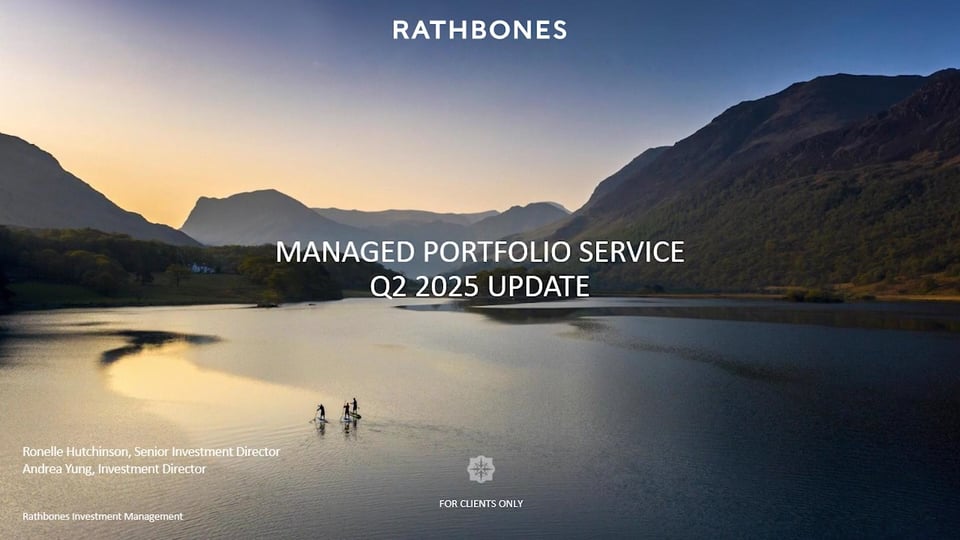Ronelle Hutchinson: Absolutely, markets appear to have shrugged off the worst of the tariff uncertainty and geopolitical risks to climb higher, but what continues to be uniquely different this year is the extent to which international Equities have dramatically outperformed the U.S. Europe is up +12.5%, the UK is up 9% and this is all vs the S&P 500 which is down 3% in pounds.
Part of this outperformance is due to weakness of the U.S. dollar with the dollar ending the first half down approximately 10%. Commodities on the other hand have sustained their performance with gold up over 13%, providing a buffer to the trade tensions, inflationary risk, and geopolitical challenges that we’ve seen this year.
From a portfolio positioning perspective, we remain underweight US equities and this is driven by our concerns for the growth outlook, the elevated valuations, and the accelerated earnings expectations in the US. We continue to be overweight European equities leaning into the improved outlook in the region due to fiscal spending and lower interest rates. In addition, valuations in Europe are relatively undemanding. We have maintained our exposure to alternatives but have enhanced protection in the portfolio, focusing on relative value strategies that limit portfolio volatility and the potential for drawdown risk. We remain overweight fixed income but are shorter duration vs the benchmark largely due to higher levels of bond volatility that we’re seeing on the back of increased debt levels and risk of inflation staying higher for longer.
Sustained Strength in the US economy and better than expected earnings growth is a risk to our marginally underweight US view. European growth on the other hand is disappointing with fiscal spending under-delivering and weaker consumer demand will also be a risk to our positive European outlook. So will be watching economic data such as, GDP and the purchasing manager surveys and consumer confidence and retail numbers to determine consumer demand. We’ll also be closely watching inflation and the extent to which this impacts on the FED or central banks’ ability to cut interest rates and interest rate expectations. So clearly a lot to keep us keenly focused on market developments going into the second half of the year to ensure that we maintain the right positioning for the portfolios to ensure good outcomes in the second half of the year.
Andrea Yung: It has been another volatile period for markets this quarter. The start of the quarter saw significant volatility on the back of US tariffs concerns – which caused a sharp sell-off in markets. However, as we moved into the quarter a strong earnings season, especially from mega cap-tech stocks helped to support a rebound in markets, with May and June proving to be a positive period for equity investors.
Taking a longer-term view, looking at performance since inception, our portfolios have outperformed their peer group across our full range. We continue to take a long-term approach to investing, with a focus on downside protection which helps to smooth out our returns and support long-term performance.
Reflecting on the key changes that we have made over the quarter:
Firstly, we have reduced our property allocation, our exposure here was highly weighted to the US and therefore closely tied to the performance of the US economy. With an expected slowdown in growth, and trade tariffs creating potentially higher inflation, we wanted to reduce our exposure to these particular headwinds.
Instead, we have aimed to enhance protection of the portfolios by adding exposure to low-risk strategies. These types of funds focus on capital preservation and are designed to help cushion the impact during downturns. While they may not lead the way if markets rally, we believe they play an important role in reducing overall volatility and preserving capital during uncertain periods.
Finally, we have increased our European exposure across our range. This has been motivated by – enhanced government spending, lower interest rates and attractive valuations.



